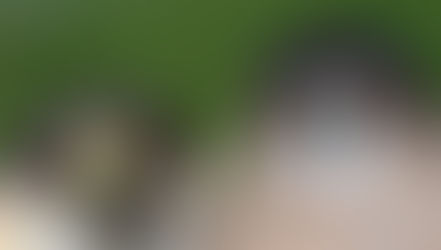The best hummingbird feeders (2024) - A guide to buying hummingbird feeders
- Zach (Head Flocker)

- Oct 21, 2024
- 5 min read
Hummingbird feeders are a great way to get 'slowed' views of hummingbirds. They are also a great way to support these zippy buggers during late spring storms!

Hummingbirds are the pinnacle of backyard bird feeding. These lustrous flying paragons (say that 3 times, fast) are fierce yet delicate, and they require a more constant effort from bird feeders. Learn the optimal feeding methods to attract and protect these amazing birds!
Want more tips to maximize your feeding? Join our flock!
Want to learn more about hummingbirds? Check out our other posts:
When should I hang my hummingbird feeders?
This question is complex and deserves a longer answer. If you want to see our map of when to hang your hummingbird feeder, click here! For the initiated, here is a simplified answer. If you live in the desert southwest or along Pacific Coast, you may have the luxury of experiencing hummingbirds year-round. However, for those who experience harsh winters, hummingbirds bless our feeders for only a few months each year. If you live on the Gulf or Pacific Coast, you are likely to have hummingbirds most of the year. If you live in the central areas of the United States, your hummingbirds may not arrive until the end of April or even early May. While unfair, we only provide the dates of hummingbird arrivals. We do not get to decide when they show up!
As an Amazon Associate, we earn from qualifying purchases.
Links may lead to affiliate sites.
The best hummingbird feeders
Most bird lovers in the US and Canada do not see the hordes of hummingbirds that visit key migration sites. However, no matter your location, everyone has the opportunity to attract a hummingbird. Since you are unlikely to have your feeders mobbed by hundreds of hummingbirds, you do not need a 20+ oz hummingbird feeder. Why? The birds simply cannot eat the "nectar" before you need to replace it and clean the feeder. Our solution? The Juegoal 12 oz Hanging Feeder!
This feeder is a small, easy-to-clean hummingbird feeder! Also, this hummer feeder lacks yellow flowers which some studies show can attract bees, wasps, etc. Have an ant problem? This great hummingbird feeder has an ant moat to help lessen your ant issue!
Best Hummingbird Feeder: Juegoal 12 oz Hanging Feeder
This hummingbird feeder has received 4.5/5.0 stars in online reviews! A major benefit of this feeder is its ease of cleaning! Cleaning is essential to keep your hummingbirds safe and healthy, so an easy-to-clean feeder should be at the top of your list! How do you clean this feeder? Simple. It pulls apart into two pieces, then you soak it in a diluted solution of vinegar or bleach, rinse it off, and let it dry. For more complete cleaning instructions, click here.
The simplicity, capacity, and price of this hummingbird feeder make it our top recommendation for hummingbird feeders. Here at Flocking Around HQ, we have FIVE of this very feeder hanging around the property.
Best Large Capacity Hummingbird Feeder: 72 oz Hummingbird Feeder
Now, if you live in an area with hundreds of daily hummingbird visitors, you might see this behemoth of a hummingbird feeder as a great option. It is the largest hummingbird feeder on the available market, and the base of this hummingbird feeder is one of our favorites due to its easy cleaning capabilities. The base is also quite durable, as it has survived many seasons of Wyoming wind, sun, and bears.
How to make homemade hummingbird food
Please, please, please, DO NOT USE RED DYE! If you do not believe you have the time to make your own hummingbird food, then plant flowers that attract hummingbirds. Purchasing hummingbird food with red dyes is not helping birds. DO NOT DO IT.
Now, to make your own hummingbird food, follow these steps:
Mix 1 part sugar with 4 parts water (for example, 1 cup of sugar with 4 cups of water) until the sugar is dissolved - Make sure to only use REFINED WHITE SUGAR (no honey)
Boiling is okay but not always necessary
DO NOT ADD ANY DYE
Fill your hummingbird feeder with homemade food
Extra hummingbird food can be stored in a refrigerator
Here at Flocking Around, we make enough food to last for several weeks, and then we store it in sealed glass jars. If you are worried about the time required for making food, this is a great way to be prepared. Of course, the whole process takes less than 10 minutes, but we still won't discourage a well-prepped hummingbird feeder!
Identify Hummingbirds with this Hummingbird Guide
Of course, attracting hummingbirds is the first step. The next step is to learn to identify the species that might visit your feeders and yard! Our top recommendation is North American Hummingbirds: An Identification Guide.
Attracting hummingbirds to your yard
Hanging hummingbird feeders can be a quick and easy way to attract a variety of hummingbirds to your yard, but using native plants is a natural, ethical, and conservation-minded method to attract hummingbirds into your yard. There are countless native plant databases available on the internet, but the National Audubon Society has an easy-to-use database for attracting hummingbirds and other yardbird favorites. When considering plants or feeders, many sites recommend using red-colored flowers or feeders. HOWEVER, an ample number of studies reveal that while red coloration gets a quick response from hummingbirds, red is not the sole color to constantly lure hummingbirds. All bright colors can lure hummingbirds, and if a food (nectar) reward is available, they will continue returning time after time.
What are common flock ups to avoid with a hummingbird feeder?
Feeding hummingbirds is a bit more labor-intensive than seed-feeding birds. Why? Hummingbird feeders need upkeep every three to five days, depending upon the outdoor temperatures. Additionally, one small wrong ingredient could cause great harm to local hummingbirds.
How can these mistakes be avoided? With our flocking help, use these tips:
Do not DYE!
Red dye may cause lasting harm to hummingbirds. Avoid it AT ALL COSTS. Even if the cost is no hummingbirds, avoid red dye.
Change nectar (and underwear)!
If temps are below 85°F, then nectar should be changed every four to five days.
If temps are above 85°F, then nectar should be changed every three to four days.
Keep it clean!
Bacteria and mold growth are major problems in hummingbird feeders. Every time the nectar is changed, the feeder should be cleaned.
Frankly my honey, I don't give a molasses.
Stick to the pure, white granulated sugar. Do not stray from the recipe listed above. No honey, no vanilla extract, no molasses, no organic sugar.
Avoid the chemicals!
Do not use bleach to clean hummingbird feeders. Use soap or diluted vinegar, and rinse the feeder several times to remove all residue!
Turn up the heat!
If temperatures fall below freezing, nectar becomes a popsicle. Unfortunately, hummingbirds do not fare well with popsicles. Either bring feeders in at night or find a way to provide heat to the area around a feeder.
Hummingbird Migration in the Rocky Mountains
Finally, enjoy this video from one of the best days of hummingbird watching I've experienced in the Rockies!
Do not overthink your bird feeder purchases. Simple and less are usually more when it comes to feeding birds.
If you enjoyed this post, please take a moment and subscribe to our site, like our Facebook page, follow us on Instagram, and subscribe to our Youtube Channel.




















Comments